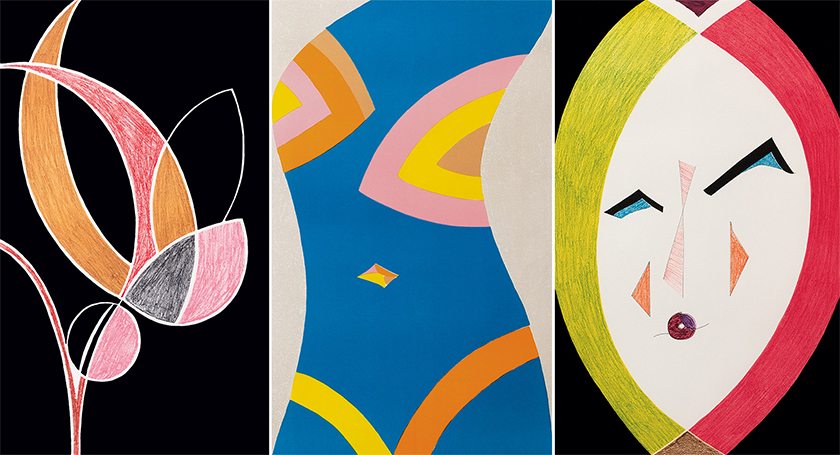
Pucci lithographs, from left: “Night Flower”, “Sensitivity”, and “Mystery of Womanhood”, 1947.
Image courtesy of: 1st Dibs, photographed by: Lapo Quagli
Back in the mid-1960’s, the international fashion press dubbed Emilio Pucci the “Prince of Prints.” This should come as no surprise to anyone who has seen his ornamental prints on a scarf or blouse. Looking back, it was this Florentine designer who was the first to enter the lifestyle market… and his comprehensive lifestyle brand remains successful today.
The book Unexpected Pucci: Interiors: Furniture, Ceramics and Art Pieces is an all-inclusive guide to the company’s heritage and iconography. The book was edited by Emilio Pucci’s daughter, Laudomia, who inherited the business in 1992 after her father’s death.
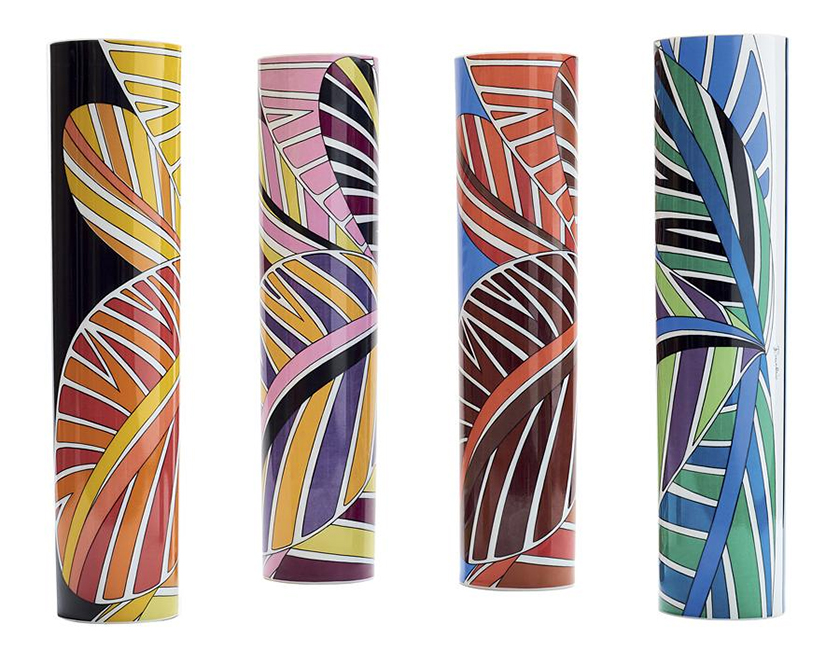
Emilio Pucci x Rosenthal, “Foliage Print” Porcelain Vases
Image courtesy of: Lookonline
Pucci’s designers were ahead of their time… and they were visionary! The unique prints that he designed enabled Pucci to build a brand while remaining true to his his imagination. Pucci formed partnerships with companies across the spectrum, all of whom admired his revolutionary style.
Pucci designed stewardess uniforms for Braniff Airlines (a smaller American airline company that declared bankruptcy in 1982), he also designed the emblem for the Apollo XV space mission of 1971 and porcelain tablewares for Rosenthal.
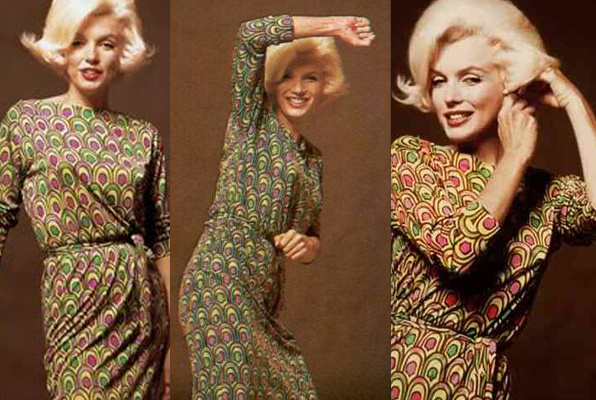
Marilyn Monroe in Pucci.
Image courtesy of: Vintage Fashion Guide
The story behind how Emilio Pucci became a fashion designer is a unique and interesting one… born to one of Italy’s most important families, Don Emilio Pucci, the Marquis of Barsento, became a member of the postwar international jet-setting crowd. Pucci quickly acclimated to a life of traveling from beach to city to mountain.
At the age of 33, his fashion career began unexpectedly when a revolutionary stretch ski outfit he designed was photographed on a Swiss ski slope, and featured in “Harper’s Bazaar.” The self-taught designer quickly turned the interest into creating resort clothing (resort-wear as we know it today) which was sold at a Capri boutique he opened. The clothing mimicked the Mediterranean Sea’s bright blue color and soft waves.
At that time, fashion was stiff and quite formal… Pucci’s style was a welcome and fresh look, and just in time for the progressive sixties. It wasn’t long before his designs were seen on celebrities such as Marilyn Monroe, Jackie Kennedy, and Elizabeth Taylor.
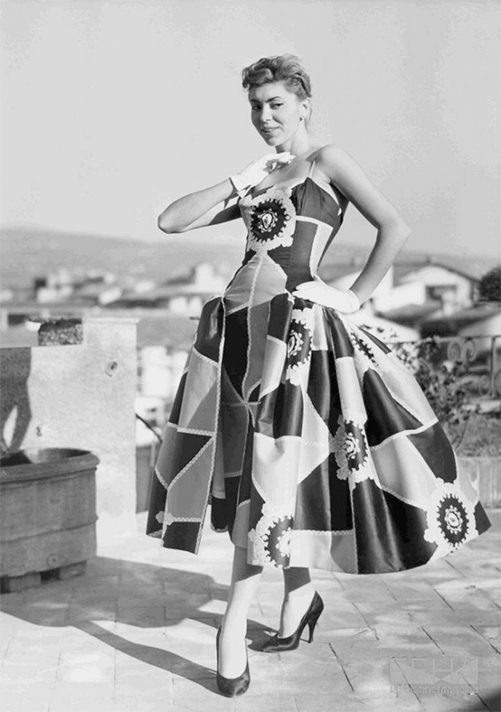
Pucci said, “The white and black of the Cathedral marbles, the red of its palaces, the fantastic colours of the Contradas. Here are my inspirations. It may seem strange that I have chosen such a remote theme for my work that has such a modern flavor. But I, today’s Florentine artisan, feel very close to the artisans of the fourteenth and fifteenth centuries, and it is precisely the medieval element of the Palio with its wealth of geometric motifs and color that fascinated me.”
Image courtesy of: Fashion Heritage
It was in the 1950’s that Pucci’s designs originated on a scarf; it was a kaleidoscope of colors that filled the graphic and abstract designs. The organic forms were inspired by the natural world: Bali Batiks, African motifs, Sicilian mosaics, and the banners of Siena’s Palio, Italy’s historic horse race.
Highly original, this was the first time such adventurous prints were merged into clothing. The vibrancy of color, in addition to the free-flowing lines, was revolutionary! With all the intrigue of couture yet lacking the weight, layering, and impracticality of it, everything about Pucci’s pieces was transformative!
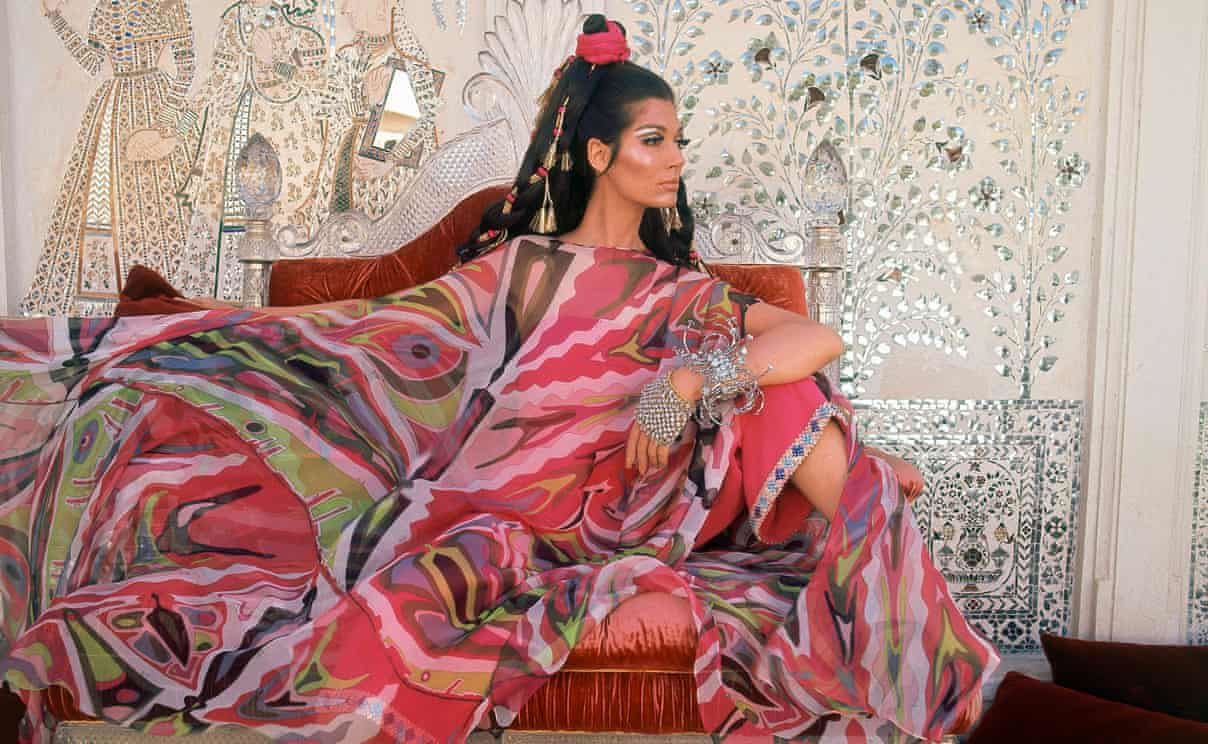
A model, Simone D’Aillencourt, in a swirled flame-print poncho and jewel-cuffed pants by Emilio Pucci, Vogue 1967.
Each print carries the designer’s name, “Emilio”, in tiny hand-written form. In such, Pucci’s name became his logo.
Image courtesy of: The Guardian, photographed by: Henry Clarke
Timing played a huge role in Pucci’s popularity. Europe was emerging from a long and terrible war… and the arrival of fresh designs and bright colors were a welcome relief among a sea of grays and blacks.
The designer said, “My prints are ornamental designs worked in continuous motion; however they are placed, there is rhythm.” We could not agree more!
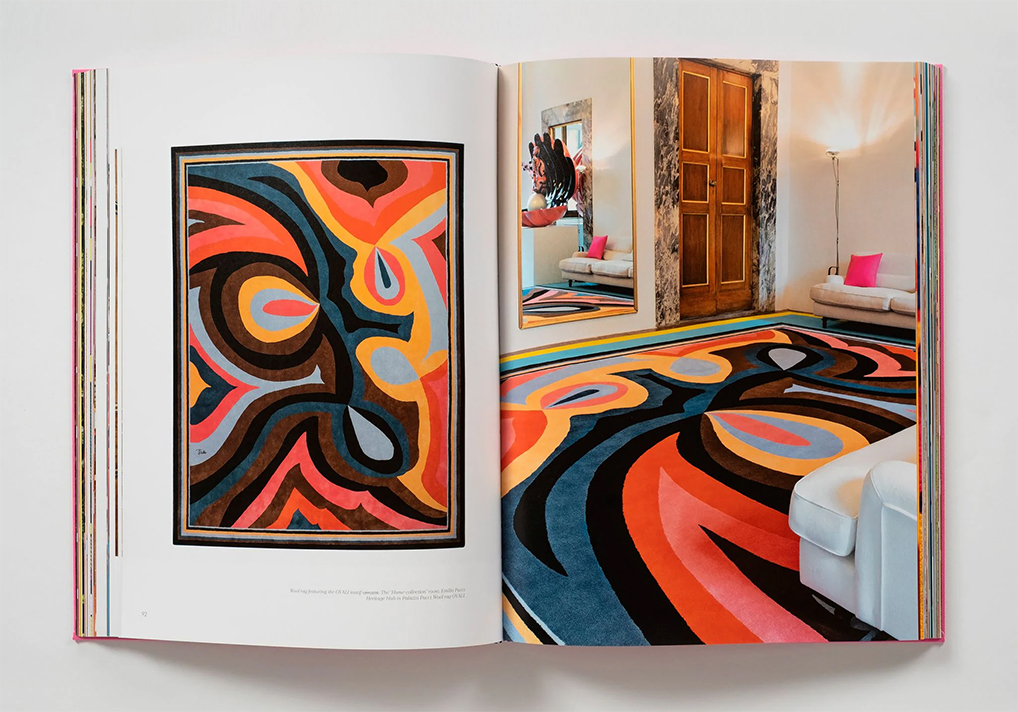
Spread from Unexpected Pucci: Interiors: Furniture, Ceramics and Art Pieces Edited by Laudomia Pucci, text by Suzy Menkes, Angelo Flaccavento and Piero Lissoni, published by Rizzoli New York
Image courtesy of emiliopucci.com